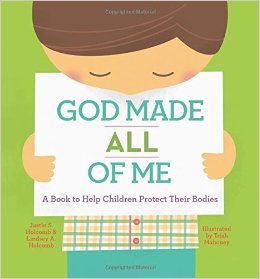“… for the most part people rely on digital technology to communicate, to learn, to be entertained, to purchase goods, and to interact in healthy nonsexual ways. Unfortunately, some people can and do get lost in the endless pleasure that digital sexnologies can provide, over time losing control and becoming addicted.” (from Always Turned On: Sex Addiction in the Digital Age by Robert Weiss and Jennifer P. Schneider)
An Age Old Problem—Amplified
As an adolescent growing up in the 1970’s, it was hard to get your hands on pornography. You might run across an abandoned Playboy riding your bike in a field. Or you and your friends scoured their dad’s nightstand for dirty magazines–most of the time without much success. Now an infinite amount of porn is available with only a few clicks of a mouse. With every click again and again endlessly on a new image—pleasure inducing chemicals are released in the brain—dopamine, serotonin and endorphins. Over repeated times of this intensity, new neural pathways are created. The brain is literally restructured, making it easier to participate deeper in the addictive behavior.
It’s a current concern and dilemma. Often we are asked by parents or family members—“how can we keep our children and young ones safe from the all the dark stuff on the internet?” These days it’s not only pornography to which parents need to be attentive. There are on-line predators and threat of cyberbullying, sexting and drug related content. Whenever we find new resources that can help parents navigate these dangerous waters, we’re glad to pass them on.

Good Pictures, Bad Pictures: Porn Proofing Today’s Young Kids
By Kristen A. Jensen, MA and Gail Poyner, PhD
Good Pictures Bad Pictures is a comfortable, read-aloud story about a mom and dad who teach their child what pornography is, why it’s dangerous, and how to reject it. Using easy-to-understand science and simple analogies, this ground-breaking book engages young kids to porn-proof their own brains. The 5-point CAN DO Plan teaches kids how to avoid the brain-warping images of pornography and minimize the troubling memories of accidental exposure that often tempt kids to look for more and lead them into a dark and destructive addiction. To stay safe in the digital age, kids must install an internal filter in their own brain. Good Pictures Bad Pictures shows them how.

Bark: Monitoring Software
According to their website—“How to protect your children online? Our solution helps keep your children safe from cyberbullying and online predators without you having to spend hours reading their activity.”
For a free month to start and then a monthly fee, Bark monitoring software:
- Intelligently analyzes your child’s social activity behind the scenes
- Sends you and your child alerts about possible issues
- Provides recommended actions on how to deal with issues
- Doesn’t interfere with safe behaviors
- Uses data science and machine learning, and is far more accurate than just looking for keywords
Here’s the link for more information.

God Made All of Me
By Justin S. Holcomb and Lindsey A. Holcomb
It’s easy to convey the message to children that their bodies or particular parts of their bodies are shameful. This misconception fuels confusion, embarrassment, and secrecy, and often prevents children from recognizing or reporting sexual abuse.
God Made All of Me is a simply-told, beautifully-illustrated story to help families talk about these sensitive issues with two- to eight-year-old children. Because the private parts of our bodies are private, the home is the ideal environment where a child should learn about his or her body and how it should be treated by others.
God Made All of Me starts from the fundamental truth that God created everything and applies that truth to kids and their bodies. It equips parents to talk with both boys and girls about their bodies. It helps them understand the difference between the appropriate and inappropriate touch of others.

Scott Kingry
Program Director
A staff member since June of 1992, Scott is a key player in the WGA discipleship ministry. He plans, organizes, and implements every aspect of the Thursday night support group. In addition to public speaking, counseling group participants and training leaders, Scott maintains personal contact with many group members and it is to Scott’s credit that many group members feel personally welcomed, cared for and loved.
Although he holds a degree in graphic arts, he attributes his ministry qualifications to the “school of hard knocks.” God’s abundant grace continues to be the instrument of growth in his life, and he desires to be firmly grounded in the forgiveness and freedom of relationship with Jesus Christ.
Scott attends a Presbyterian Church.

